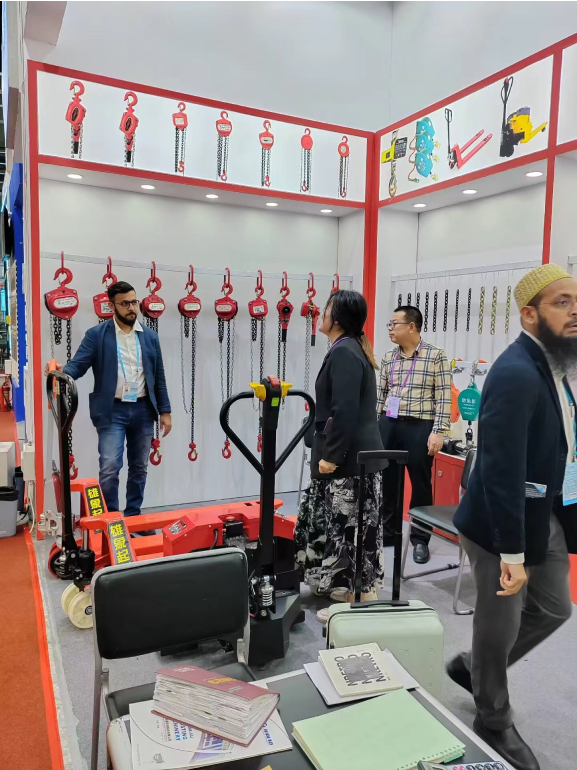


Designing an Efficient Pallet Truck An Overview
Pallet trucks, also known as pallet jacks, are critical tools in warehouses, distribution centers, and retail environments. They are designed to lift and transport pallets, making it easier to move heavy goods without putting excessive strain on the workers. As industries evolve, so does the need for innovative designs that enhance efficiency, safety, and usability. This article delves into the essential aspects of pallet truck design.
Understanding the Basics
A pallet truck consists of a few fundamental components the forks, hydraulic lift mechanism, wheels, and control handle. The forks are the pronged extensions that slide beneath the pallet. The hydraulic lift mechanism enables users to raise the pallet off the ground for transport. Wheels allow the unit to move smoothly across various surfaces, and the control handle serves to guide and maneuver the truck effectively. The design challenge lies in enhancing these components to improve performance.
Ergonomics A Key Consideration
Ergonomics plays a pivotal role in the design of pallet trucks. With more workers managing heavy loads, it's essential that trucks are designed to minimize strain. One way to achieve this is through adjustable handles that accommodate users of different heights. Additionally, the design should incorporate a comfortable grip to reduce fatigue during prolonged use. Features like a low-profile design can also aid in reducing bending and stretching, thus promoting better posture and reducing the risk of injury.
Load Capacity and Stability
The load capacity of a pallet truck is determined by the materials and design quality. Steel is commonly utilized for its strength and durability, while lightweight materials can reduce the overall weight of the truck, making it easier to handle. Moreover, the width and length of the forks should be optimized according to the standard sizes of pallets (typically 48x40 inches), allowing for greater stability during transportation.
Stability features should also be integrated into the design. For example, wider wheelbases can prevent tipping while moving heavy loads. Additionally, designing the balance point of the truck effectively can help prevent accidents, especially when navigating ramps or uneven surfaces. These considerations not only enhance safety but also improve the efficiency of load handling.

Innovation in Wheel Design
The wheels of a pallet truck are essential for its mobility. Traditional rubber wheels can wear out quickly, leading to decreased efficiency. Therefore, many modern designs incorporate polyurethane wheels, which not only offer better traction but also exhibit superior durability and resistance to wear. Furthermore, the choice of wheels can affect maneuverability; swivel casters can enhance turning capabilities in tight spaces, while larger wheels are beneficial for traversing rough terrain.
Incorporating Technology
As technology continues to advance, integrating smart features into pallet truck design has become increasingly popular. For instance, some trucks now come equipped with built-in scales to provide real-time weight readings, promoting more efficient load management. Wireless technology allows for inventory tracking and diagnostics, which can enhance operational efficiency and reduce downtime.
Furthermore, the introduction of electric pallet trucks has revolutionized the industry. These electrically powered options require less physical effort from workers, making them suitable for heavier loads and longer durations. With the right design, electric trucks can maintain a compact form factor while offering powerful lifting capabilities.
Sustainability in Design
In today’s eco-conscious business environment, sustainability has become a crucial consideration in the design of pallet trucks. Manufacturers are increasingly focusing on using recyclable materials and designing for disassembly, making it easier to recycle components at the end of the truck’s lifecycle. Additionally, energy-efficient electric models contribute to reducing the overall carbon footprint of logistics operations.
Conclusion
The design of pallet trucks is a multifaceted challenge that intertwines functionality, ergonomics, safety, and innovation. As industries continue to adapt to new technologies and operational demands, the design of pallet trucks must also evolve. By focusing on user experience, safety, and sustainability, manufacturers can develop pallet trucks that not only fulfill their basic functions but also contribute to a more efficient and safe working environment. The ongoing advancements in design will undoubtedly shape the future of material handling, making it easier for businesses to meet their logistical challenges head-on.



